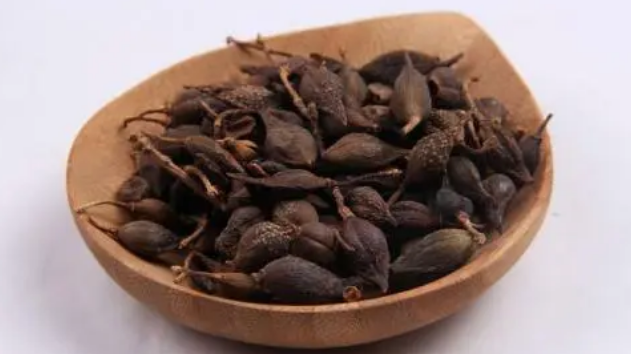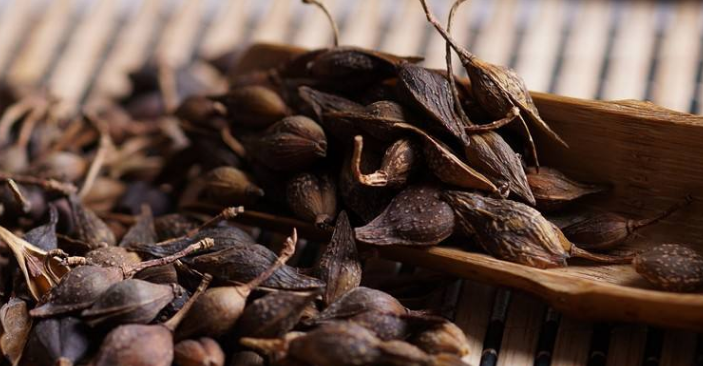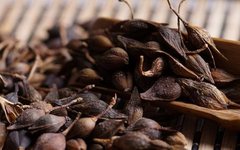
The name of Lianqiao (Forsythia Suspensa) is likely familiar to many, as it is a common household remedy found in seasonal medications like Yin Qiao Jie Du Pian (Yin Qiao Detox Tablets), where Lianqiao is a primary ingredient. However, many people are unaware that Lianqiao is actually found in our surroundings. An ancient poem states, “A thousand steps of Lianqiao are untainted by dust, the fragrant incense lazily paints the spring moth’s brow,” which describes the charm of the Lianqiao flower. The Lianqiao flower is typically a bright golden yellow, commonly referred to as Huanghua Tiao (Yellow Flower Branch) in folk traditions. This beautiful plant is particularly special because it blooms in early spring before its leaves appear, with branches adorned with golden flowers, resembling a bounty of gold, making it a popular auspicious flower during the New Year celebrations. It is often cultivated as an ornamental plant and is sometimes mistaken for the Yingchunhua (Spring Flower). In reality, it is a precious medicinal herb in China—Lianqiao. Let’s learn more about this medicinal herb with the help of the pharmacy!

[Effects of Lianqiao]
Medicinal Name
Lianqiao (Forsythia Suspensa)
Other Names
Luoqiao, Huanghua Tiao, Huang Lian Tiao Hua.
Medicinal Part
The fruit of the Oleaceae family plant Forsythia.
Distribution
Grows in low mountain shrubs or forest edges, found in Hebei, Shanxi, Shaanxi, and other regions.
Harvesting and Processing
Harvest in autumn when the fruit is initially ripe and still green, remove impurities, steam, and dry, commonly referred to as “Qingqiao”. When the fruit is fully ripe, harvest, dry, and remove impurities, commonly referred to as “Laoqiao”.
Properties and Channels
It is slightly cold in nature and bitter in taste. It enters the Lung (Fei) channel, Heart (Xin) channel, and Small Intestine (Xiao Chang) channel.
Functions and Indications
Clears heat and detoxifies, reduces swelling and disperses nodules. It belongs to the category of heat-clearing and detoxifying herbs.
Chemical Components
Contains lignans, flavonoids, volatile components, phenylethanoids, ethyl cyclohexanol, triterpenes, and coumarins. Also contains birch acid, forsythoside, burdock glycoside, podocarpus resin glycoside, resin, forsythoside C, and forsythoside D.
Herb Characteristics
Long oval to oval shape, slightly flattened, 1.5 to 2.5 cm long, 0.5 to 1.3 cm in diameter. The surface has irregular longitudinal wrinkles and many small raised spots, with a distinct longitudinal groove on each side. The tip is sharply pointed. The base has a small fruit stem or has fallen off. “Qingqiao” is mostly uncracked, with a green-brown surface and fewer raised gray-white spots; it is hard; the seeds are numerous, yellow-green, slender, with wings on one side. “Laoqiao” cracks from the top or splits into two lobes, with a yellow-brown or red-brown surface, the inner surface mostly light yellow-brown, smooth, with a longitudinal partition. It is brittle; the seeds are brown and mostly fallen off. It has a faint fragrance and a bitter taste.
Plant Morphology
Deciduous shrub, 2 to 3 meters high. The branches are slender and spread or droop, with young branches light brown and slightly four-angled, internodes hollow without pith. The leaves are opposite, with petioles; the leaf blades are entire or three-lobed, oval to long oval, 6 to 10 cm long, 1.5 to 2.5 cm wide, with a pointed tip, and a wide wedge-shaped or round base, with irregular serrated edges. Flowers bloom before the leaves, with 1 to 3 (up to 6) flowers clustered in leaf axils; the calyx is deeply divided into 4 lobes, with lobes that are long oval; the corolla is golden yellow, with 4 lobes, and the corolla tube has orange-red stripes; there are 2 stamens attached at the base of the corolla tube, with very short filaments; the style is slender, with a bifid stigma. The fruit is woody, with distinct skin pores, oval-shaped, pointed at the top, about 2 cm long, and matures in 2 lobes. The seeds are numerous and winged. The flowering period is from March to May, and the fruiting period is from July to August.

[Uses of Lianqiao]
Indications
Clears heat and detoxifies, reduces swelling and disperses nodules, disperses wind-heat. Used for abscesses, scrofula, mastitis, erysipelas, wind-heat colds, initial stages of warm diseases, heat entering the nutritive level, high fever with thirst, delirium with rashes, and painful heat dysuria.
Modern Applications
1. Treatment of acute nephritis
2. Treatment of purpura
3. Treatment of lung abscess
4. Treatment of retinal hemorrhage
Consumption Methods
Fire-Clearing and Acne-Removing Tea
Ingredients: 5 grams of Lianqiao, 3 grams of Jin Yin Hua (Honeysuckle), 3 grams of Bai Ju Hua (White Chrysanthemum).
Preparation:Crush Lianqiao and Jin Yin Hua in a mortar, mix with Bai Ju Hua, and pack into a tea bag. Place the tea bag in a cup, pour in 300cc of hot water, and let it steep for 3 to 5 minutes before drinking. It can be steeped 4 to 5 times.
Chrysanthemum and Lianqiao Soup
Ingredients: 12 grams of Bai Ju Hua, 12 grams of Lianqiao, 5 grams of Sheng Gan Cao (Raw Licorice).
Preparation:Boil the above herbs in water for 20 minutes, and after cooling to a suitable temperature, give it to the baby. Once a day.
Lianqiao and Radish Soup
Ingredients: 100 grams of white radish, 10 grams of Lianqiao, 5 grams of Nu Zhen Zi (Ligustrum Lucidum).
Preparation:Peel, wash, and slice the white radish. First, decoct Lianqiao and Nu Zhen Zi, strain to obtain the juice, then boil and add the radish slices, and consume warm.
Related Combinations
1. Treatment of Mastitis: 15 grams of Lianqiao, 30 grams of Pu Gong Ying (Dandelion), 9 grams of Wang Bu Liu Xing (Vaccaria), 15 grams of Ye Ju Hua (Wild Chrysanthemum). Decoction for oral administration. (“Qingdao Chinese Herbal Medicine Handbook”)
2. Treatment of Intestinal Abscess: 15 grams of Lianqiao, 12 grams each of Huang Qin (Scutellaria), and Zhi Zi (Gardenia), 18 grams of Jin Yin Hua. Decoction for oral administration. (“Qingdao Chinese Herbal Medicine Handbook”)
3. Treatment of Tongue Ulcers: 15 grams of Lianqiao, 9 grams of Huang Bo (Phellodendron), 6 grams of Gan Cao (Licorice), decoction for gargling. (“Yu Qiao Medical Order”)
4. Treatment of Halitosis: Grind Lianqiao into powder and form into pills, take 6 to 9 grams after eating garlic or chives, and the foul breath will transform into fresh air. (“Chi Shui Xuan Zhu” Halitosis Treatment)
5. Treatment of Allergic Purpura: 12 grams of Lianqiao, 30 grams of Hong Zao (Red Dates). Decoction for oral administration. (“Ningxia Chinese Herbal Medicine Handbook”)
Contraindications
Use with caution in cases of Qi deficiency, Yin deficiency with fever, and Spleen and Stomach deficiency heat.
Daily TCM Herb from the Pharmacy, helping your pharmacy become more professional and improve performance!


